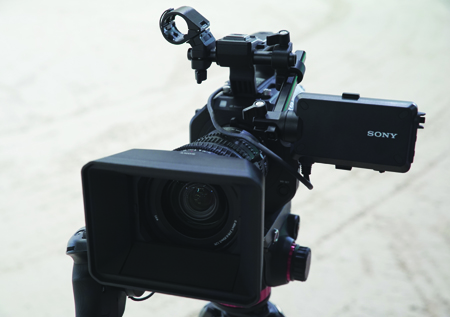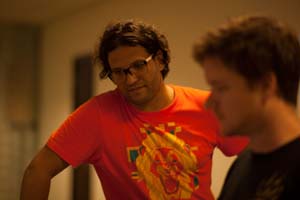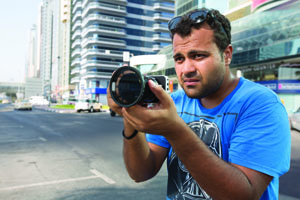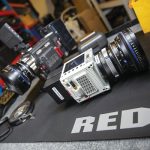Andrew Clemson compares the Blackmagic Pocket Cinema Camera with other cameras in the market and tests it with various accessories and rigs Acquiring Blackmagic cameras seem to a big saga in itself so no review would be complete without a story on how one got it as well, I suppose. I ordered the Pocket Cinema […]
Andrew Clemson compares the Blackmagic Pocket Cinema Camera with other cameras in the market and tests it with various accessories and rigs

Acquiring Blackmagic cameras seem to a big saga in itself so no review would be complete without a story on how one got it as well, I suppose.
I ordered the Pocket Cinema Camera back in April, minutes after it was announced at NAB. To date, that camera hasnt shipped. Luckily for me, the way they seem to ship cameras is to send the same number of units to ALL distributors, no matter where in the world they are located, or how big. So despite the fact that the camera I ordered from the UKs largest camera retailer is yet to appear, getting a demo unit from Dubai-based distributor Advanced Media, and subsequently my own camera from distributor MediaCast locally in Dubai, was much easier than I expected.
The BMPCC sports a super 16mm size sensor, and an active MFT mount. This differs from the existing MFT-mounted Blackmagic Cinema Camera in the sense that the larger cameras mount was passive. That means there was no electronic control of aperture or focus. It also meant that the camera could not utilise IS functions in the lenses that had them.
The camera records 1920X1080 in ProResHQ. The ability to shoot CinemaDNG RAW is still absent on the camera, promised through future firmware updates. A RAW-capable camera (recording internally) of this size is absolutely unheard of and an amazing feat from Blackmagic. Some people may argue that the 5DMK3 can now shoot RAW via a third party hack but Im just not a fan of it. Its very limited in what it can do and I would never trust it on a commercial gig.
The only other cameras that can record RAW internally are REDs, the XT-upgraded Alexas and the larger Blackmagic cameras. Other cameras will record RAW (Canon C500, Sony Fs700/F5/F55, non-Xt Alexa) but all of them require bulky external recorders.
Marketing states 13 stops of dynamic range in RAW mode so that would place it nicely in the same range as the Alexa which certainly bolsters its potential as a B-Camera/crash cam.
The MFT lens mount can be adapted to accept pretty much any lens you might want to put on it. I have shot with Canon and Nikon SLR lenses, PL mount Cinema lenses and various C-Mount lenses, all of which performed great.
Ive shot this camera in next to no light, at 1600ASA (maximum sensitivity) and I was amazed at what it can produce. Even though there is grain in the images in low light conditions, much like the Alexa, the noise has a very organic feel to it, and is much more appealing to me than other cameras at similar ASAs.
Support gear is available from a number of third-party manufacturers. I have always been a big supporter of Wooden Camera accessories for my RED equipment, and so was pleasantly surprised to see them offer the first solution out of the gate for the pocket camera.
The camera only offers two ¼ 20 threads (one top, one bottom) which basically means after adding a tripod plate and a hotshoe adapter for your mic or so on, you are left with no way to mount anything on your camera. A lightweight cage from wooden camera, offering additional ¼ 20 mounting points on top and on the side for handles or monitors can be had for as low as $99.
The full support package with cage, handles, 15mm rods, quick release and PL mount will set you back around $1500. If your camera is going out into professional environments, especially for rental, then a proper support kit is essential and you cant go wrong with the wooden camera stuff.
The pocket camera isnt without its issues, however. Upon shipping, the camera suffered from both a blooming artifact on specular highlights and practicals, as well as a black sun issue where objects beyond clipping (such as the sun) would appear black. A subsequent firmware release has already eliminated the black sun problem, and Blackmagic has shown evidence that the blooming sensors are a calibration issue with early units of the camera, which can be fixed by recalibration (at an authorised service centre). Having said that, neither problem affected me too badly while I was using the camera as both can be controlled somewhat by proper balanced exposure.
The other tricky thing about the pocket camera is the crop factor of its sensor. A 35mm lens on a 16mm sensor equates to a crop of around 3X. That means a 50mm on a 35mm camera will have an effective field of view on the pocket camera of 150mm. Lenses designed for MFT sensors or 16mm film cameras, will have an effective crop of 2X, so an 18mm MFT or 16mm film lens would have an effective FOV of 36mm on a 35mm camera.
This means, whilst you can put pretty much mount any lens on the camera, only the wider ones will be of much use. Most of what I shot initially was done using a Duclos lenses PL mount 11-16mm lens via the wooden camera PL mount, which equates to around 33-48mm on the pocket sensor.
The perfect lenses for this camera are likely the Panasonic Lumix zooms, which I was lucky to use recently for my review of the GH3. The 12-35mm and 35-100mm equate to around 24-70mm and 70-200mm respectively, a range most Canon DSLR users are used to, and both are very well stabilised via IS. The IS is very useful to counteract the rolling shutter artifacts caused by the pocket cameras small sensor, and size, especially if you are planning to shoot handheld.
Recording is internal to SD cards. But while you may already have SD cards lying about, be aware that only the fastest will work in the pocket camera. I used Sandisk Extreme 95mb/s cards and had no issues. While you could record out of the MicroHDMI port to a larger recorder such as an Atomos Samurai Blade, the internal recording from the camera is so good (both internal and HDMI out are 10bit) that the only real benefit would be for longer recording times, and the additional bulk would seem rather counter intuitive to where this cameras strengths lie.
Battery life is another nuance of the pocket camera. Whilst, unlike its bigger brother, it sports replaceable batteries, the battery life can be quite short. The camera ships with one 800ma battery, but the battery type is a widely available Nikon EN-EL20 type. These batteries come at 1020mah in their Nikon version, and I picked up some 1200mah very cheaply on Amazon. You can find them all the way up to 1800mah so that is definitely an option worth exploring. Again, you could plug a larger V lock battery in and shoot all day, but if youre ok with the added bulk, it would suggest you might be better sticking to the 2.5K camera.
In my testing, I found I could spend a whole day filming casually on six 1200mah batteries and four 32GB SD cards. (That equates to around an hour-and-a-half of footage).
The menu is a welcome improvement for me over the larger camera, and is somewhat of a necessity on a camera of this size. Whereas the 2.5K model has a capacitive touch screen menu, the pocket has gone with a traditional button navigation system. Now, while the touch screen is faster to navigate, it doesnt always favour sweaty hands, or the use of screenshades/Viewfinder loupes which we categorically need here for shooting outside. Once you get used to the structure of the menu system (which is nowhere near as complicated as on a Canon DSLR), changing functions and settings takes no time at all, and you neednt take your eye from the screen for a second. The more glaringly obvious benefit is that you dont have to try navigating a touchscreen menu on a 3.5 screen!
The camera sports a nice little focus assist, much akin to peaking which helps with critical focus and has full Zebras, for checking your exposure falls within a manageable range. When fitted with an electronic lens like the Lumix zooms, the focus assist can be used to auto focus, albeit with mixed results.
Once again, audio seems to have been an afterthought in this camera. There is zero metering and the levels are so low I really couldnt suggest recording anything other than a very basic scratch track direct to camera. I have yet to put a signal from a sound recordists mixer through it, but had to set the RODE videomic Pro to +20db to get anything even vaguely passable.
Where I see this camera excelling is as a replacement for other smaller cameras such as the Canon DSLRs or even GoPros in both covert filming situations and for jobs where the size is of benefit, i.e rigging multiple angles on car shoots, or even flying on lightweight Octocopters such as the DJI-S800 which can be bought locally from Advanced Media.
I work on a lot of car commercials, and it always pains me to see an A-camera such as an Arri Alexa or Red Epic paired up with a Canon DSLR as a second angle. Even in ProResHQ, the Log colour space of the pocket camera is much more elastic and easier to grade than the H264 files from a 5D. Taking into account the insane price (just over the cost of 2 GoPros), I think once the RAW option is enabled, this will become a really solid go-to option for commercials.










































































